

Discovering our Trees
Whilst you enjoy the gorgeous views from Hong Kong West Kowloon Station, you can also take a stroll through the beautiful trees in the Green Plaza and the Bus Terminus Rooftop Garden.
Discover our trees
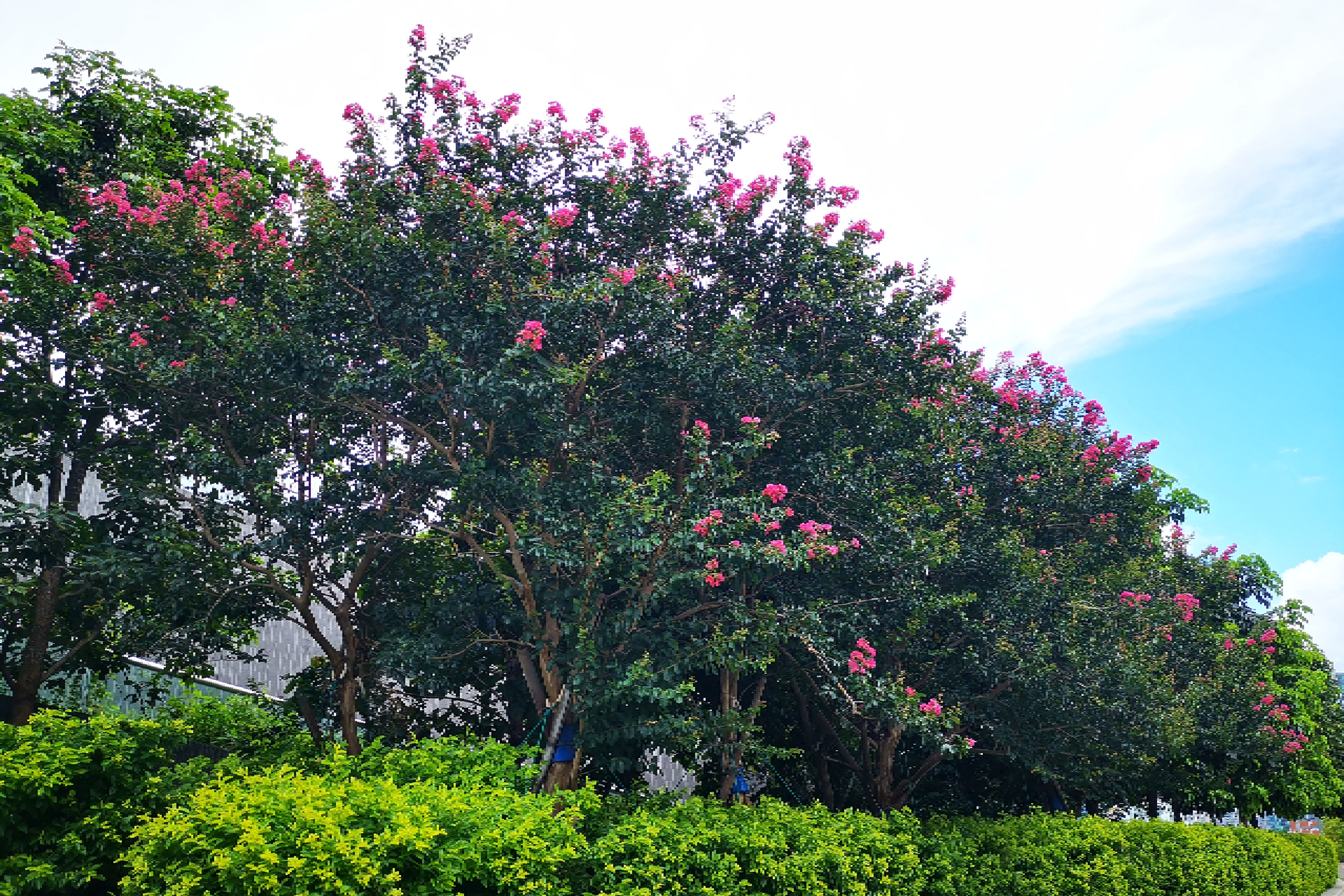
Common Crapemyrtle
Scientific Name: Lagerstroemia indica Linn
Family: LYTHRACEAE
Genus: Lagerstroemia
Common Crapemyrtle is a deciduous shrub or small tree native to China and now widely grown as an ornamental tree in Hong Kong, which can grow up to 7 m. Bark smooth, grey or greyish brown. Trunk slightly angled and twigs 4‑angled. Leaves paired or upper ones single, papery, elliptical, stalkless or nearly so. Flowers usually light pink or purple with 6 crape‑like petals, many in upright clusters forming solid, round masses from June to September. Fruits can be seen from September to December which are rounded capsule and will turn into blackish purple when mature, dehiscing small, winged seeds. It is sometimes called the itching flower, because when the trunk is rubbed, the delicate flowers and leaves will tremble on the branches.
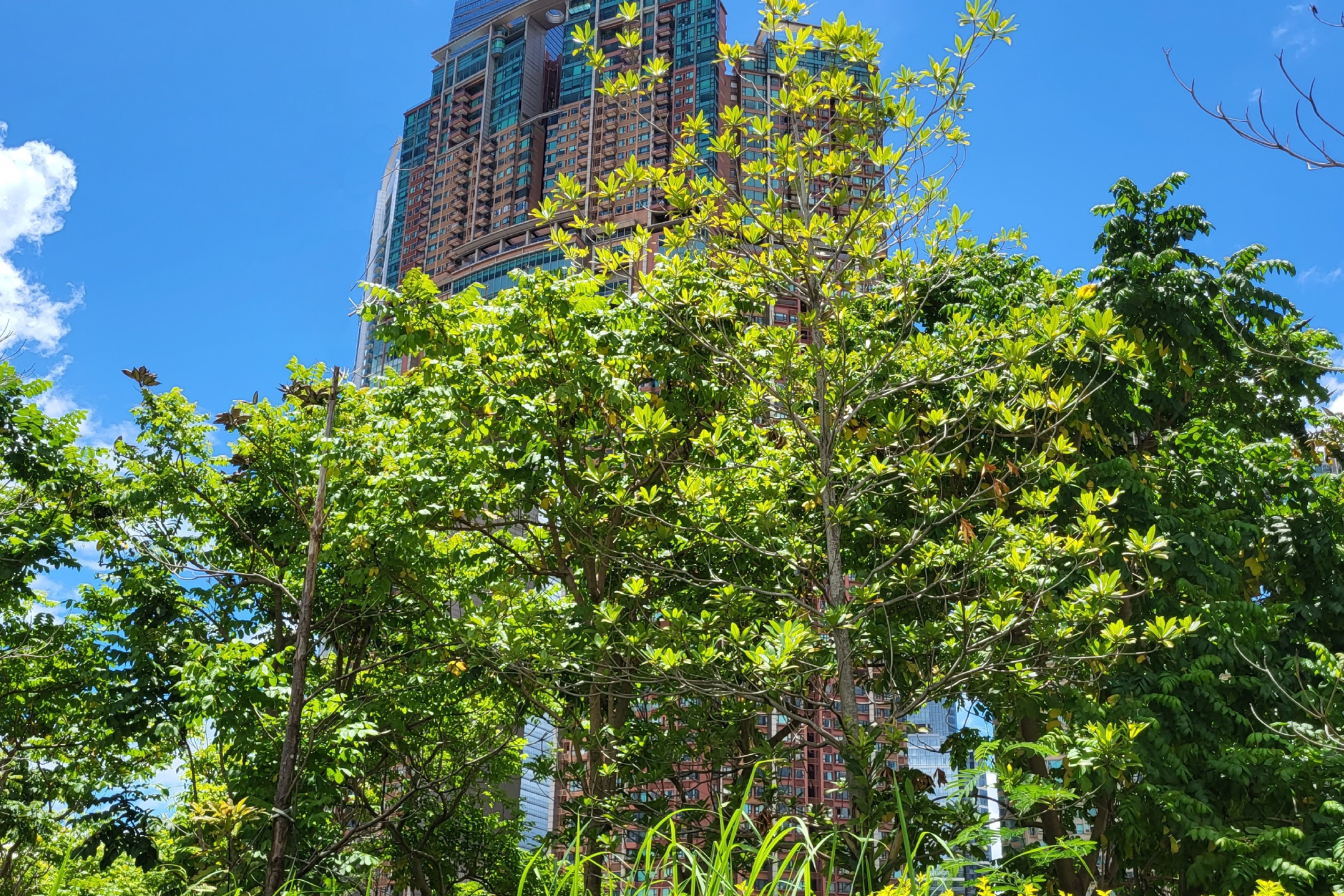
Big-leaved Elaeocarpus
Scientific Name: Elaeocarpus balansae A. DC.
Family: ELAEOCARPACEAE
Genus: Elaeocarpus
Big‑leaved Elaeocarpus is an evergreen tree, native to South‑east part of Yunnan, China, which can sprout up to 15 m tall. Branchlets robust, rust‑brown tomentose. Leaves are leathery or papery, elliptic, margin serrate. Yellowish white flowers bloom in April, inflorescence axillary, petals 5, obovate. Fruits appear from May to June and are green spindle‑shaped drupes, pointed at both ends.
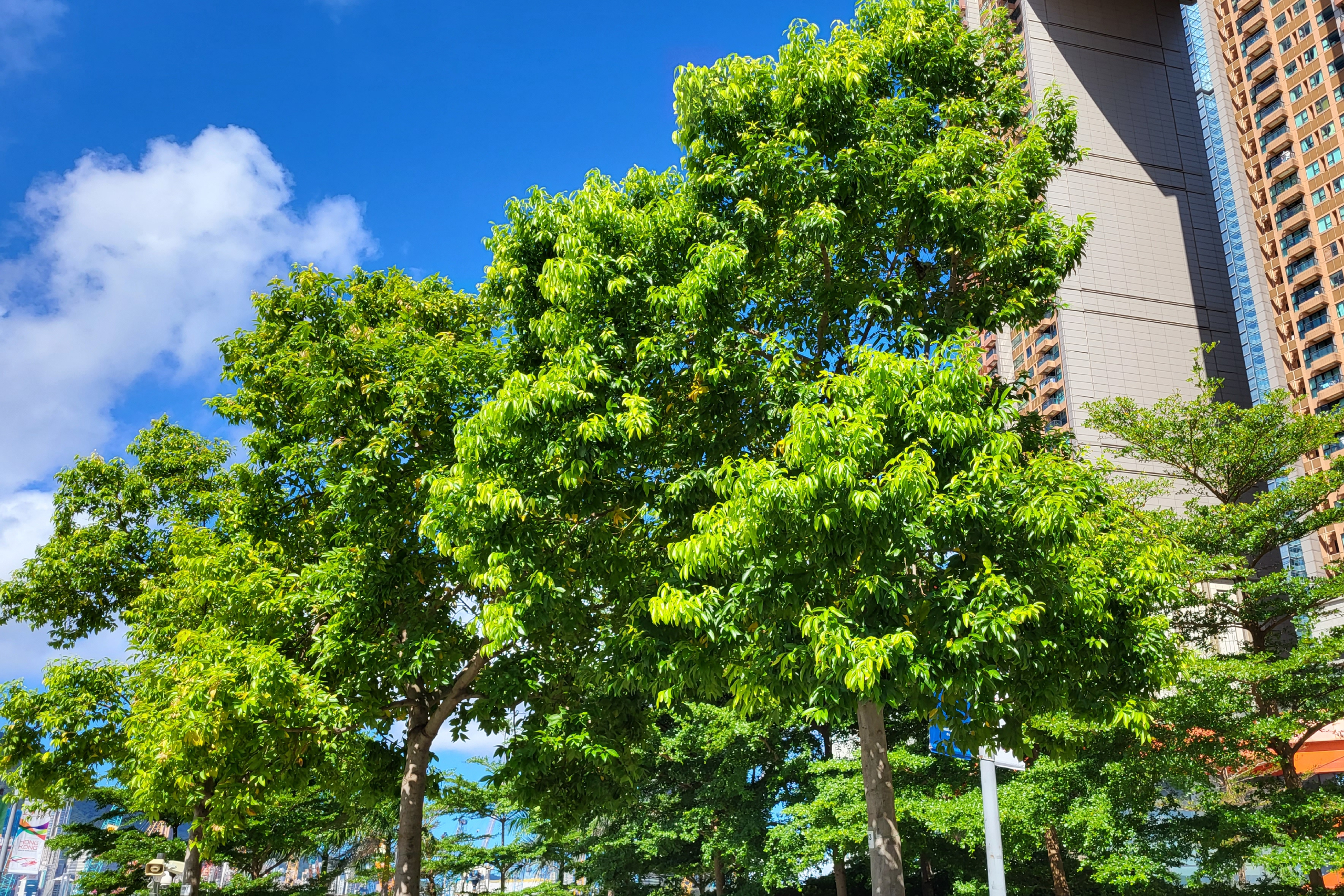
Batavia Cinnamon, Cinnamon Tree
Scientific Name: Cinnamomum burmannii (Nees & T. Nees) Blume
Family: LAURACEAE
Genus: Cinnamomum
Batavia Cinnamon is a common native evergreen tree in Hong Kong and can grow as tall as 14 m. The bark of trunk is smooth and greyish brown to blackish brown in colour. It has pinkish new leaves and young branches. Leaves are ovate, oblong to lanceolate in shape, adaxially green and glossy, abaxially glaucous green and dull with bird‑foot veins. Small greenish white, 6‑petaled flowers blossom from March to April. It bears elliptical drupes from October to November, which turn purplish black when ripe. All parts of the tree are strongly camphor‑scented like Camphor Tree and its bark is a source for the spice "Guipi" for preparing the South China dishes "Lou Mei".
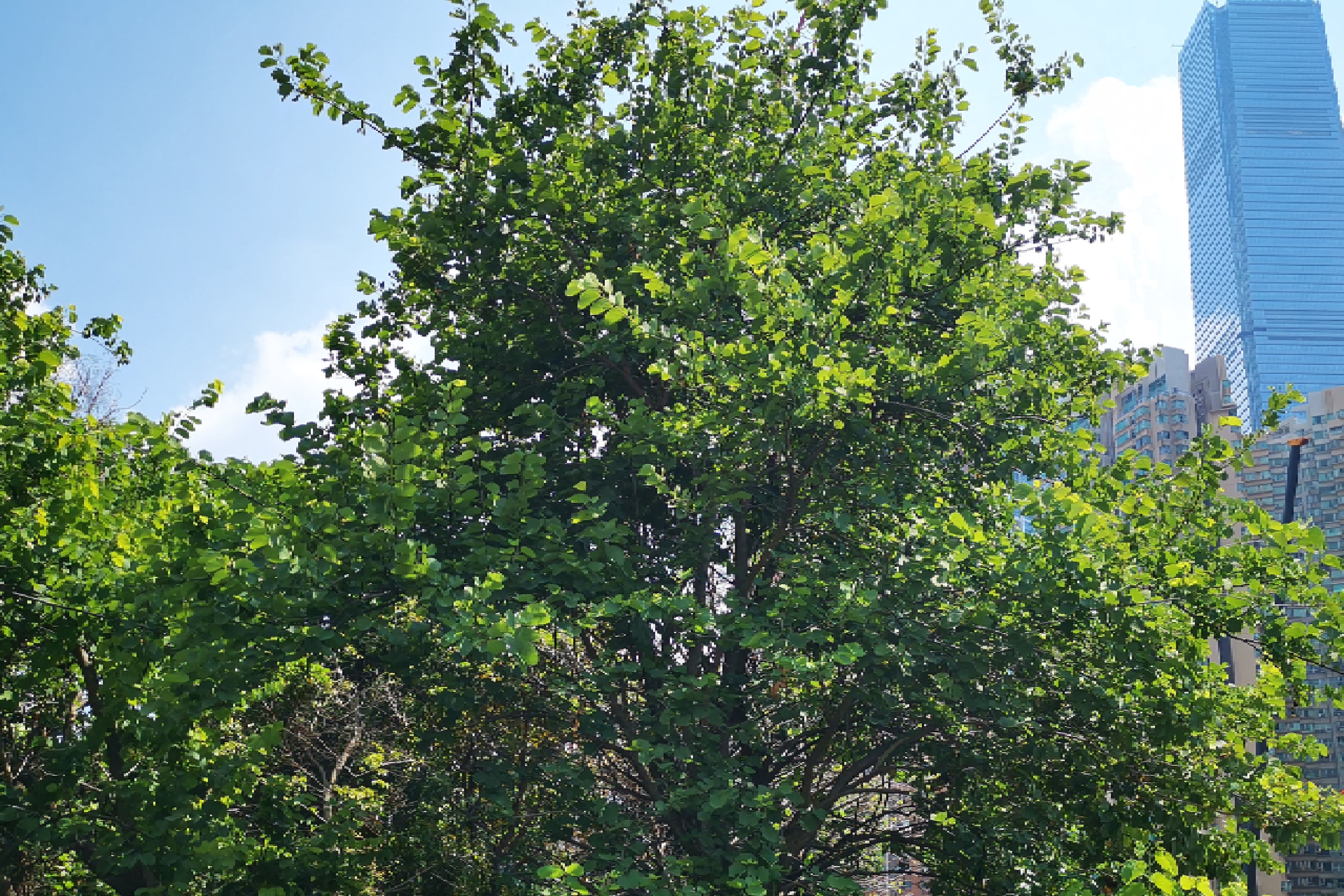
Camel's Foot Tree
Scientific Name: Bauhinia variegata L.
Family: CAESALPINIACEAE
Genus: Bauhinia
Camel's Foot Tree is native to Southern China, India and Malay Peninsula and a commonly seen deciduous tree in Hong Kong. It can reach as tall as 15 m. Bark greyish brown, irregularly and conspicuously cracked. Leaves alternate, 5‑12 cm long, shaped like camel hooves, with a small slit at the front, and two‑lobed at the base. 11‑13 veins extend from the base. Flowers appear in March, showy, fragrant, pink, with 5 separate petals. The upper petal is broader with conspicuous red and yellow stripes. The flowers can yield blackish, bean like, quite long seed pods (up to 30 cm) which hang from branches in April.

Yellow Pui, Araguaney
Scientific Name: Tabebuia chrysantha (Jacq.) G. Nicholson
Family: BIGNONIACEAE
Genus: Tabebuia
Yellow Pui is a small deciduous tree introduced from Central to South America, in the regions of Mexico to Venezuela, which average 5 to 10 m tall. Bark of trunk grey, with conspicuous and deep ridged cracks. Leaves have 5 ovate, serrate leaflets covered with fine hairs that spread from the same point like the fingers of a hand (i.e. palmately compound). The attractive golden yellow flowers are produced in abundance in early spring but normally only last for a week. These flowers are tubular in shape, with 5 shallow petal lobes with wavy margin. Soon after flowering, long and slender seed pods are formed on the tree. When dried, the pods will split and release large numbers of papery seeds with transparent wings. It offers spectacular views when the large yellow flowers are in full blossom but the flowering period is very short. Its flowers usually do not co‑exist with the foliage and it will shed its leaves before blooming. After flowering, the tree will put on new leaves and become green again.

Royal Palm
Scientific Name: Roystonea regia (Kunth) O.F.Cook
Family: ARECACEAE
Genus: Roystonea
Royal Palm is tree‑like palm and can reach 30 m tall, native to Cuba, Central America, Central Mexico, Caribbean and Southeast United States. It is the national tree of Cuba. It has a simple and stout trunk with a diameter to 0.5 m but no branches. The bottom of the stem is light grey and the top where the leaves spread is bright green. Dark green fronds (large evergreen leaves) are arranged spirally at the top of the trunk which can be up to 3 m long, pinnate, glossy. Milky white to milky yellow flowers bloom in drop clusters from March to April. Both the male and female flowers form on the same panicle and are tiny. The fruiting period is October. Fruits drupes, ellipsoid, dark red to blackish purple, with one seed.
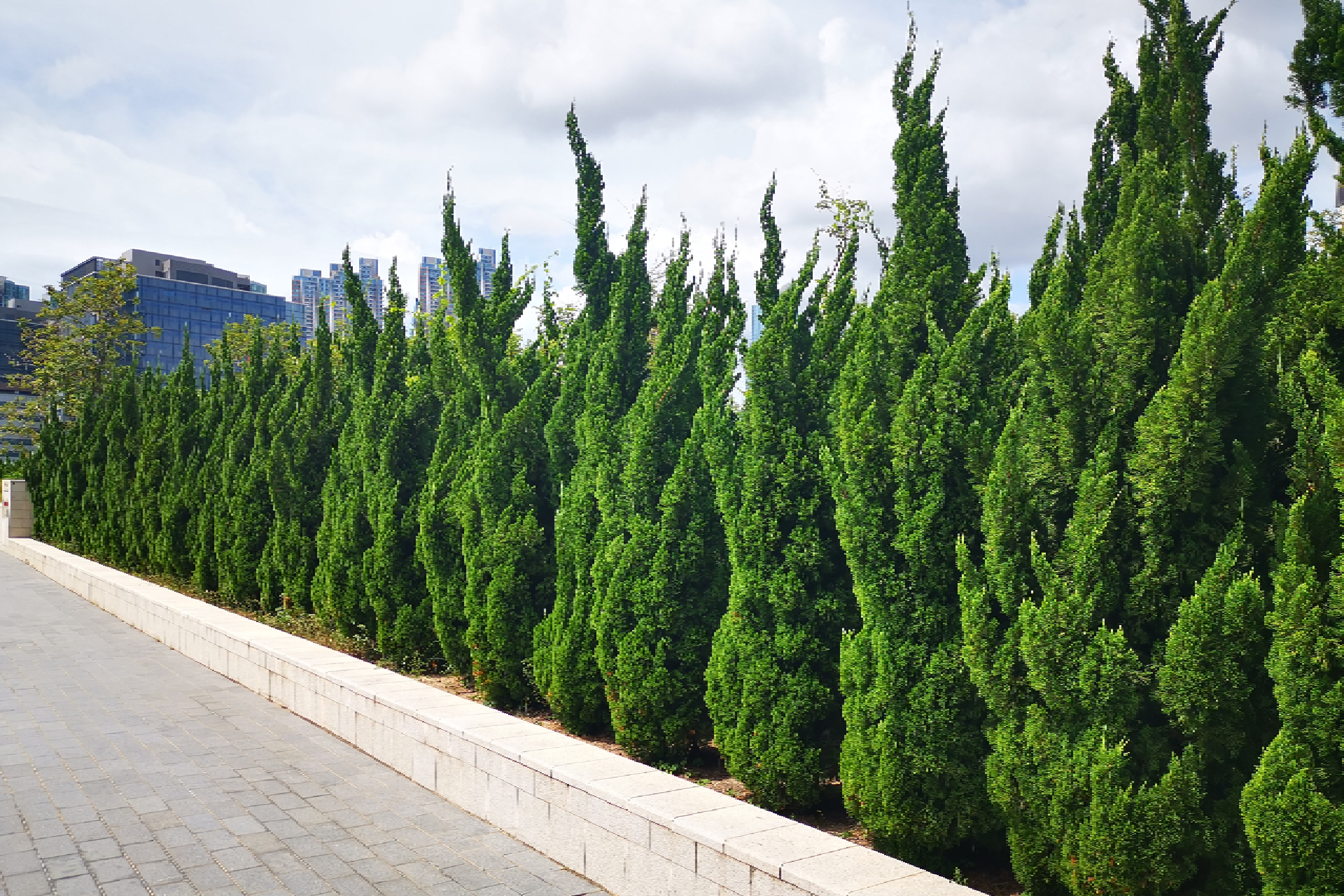
Dragon Juniper
Scientific Name: Juniperus chinensis L. 'Kaizuca'
Family: CUPRESSACEAE
Genus: Juniperus
Dragon Juniper is a small evergreen tree originating from China and reach a height up to 6 m. The entire tree is green in colour and has its own distinct fragrance. It also has a unique tree form that a crown is cylindrical to a columnar tower in shape, with branches often twisted when growing upward. It has two types of leaves – scalelike leaves and needlelike leaves. It blooms from March to April with greyish green flowers growing at the tips of branchlets. Branches bear tiny cones with fleshy, fruit‑like coalescing scales. Fruits are slightly covered with a whitish powdery coating which will turn from blue to dark brown at maturity. Seeds are ovoid in shape and brown in colour. Its fruiting period is October to January.
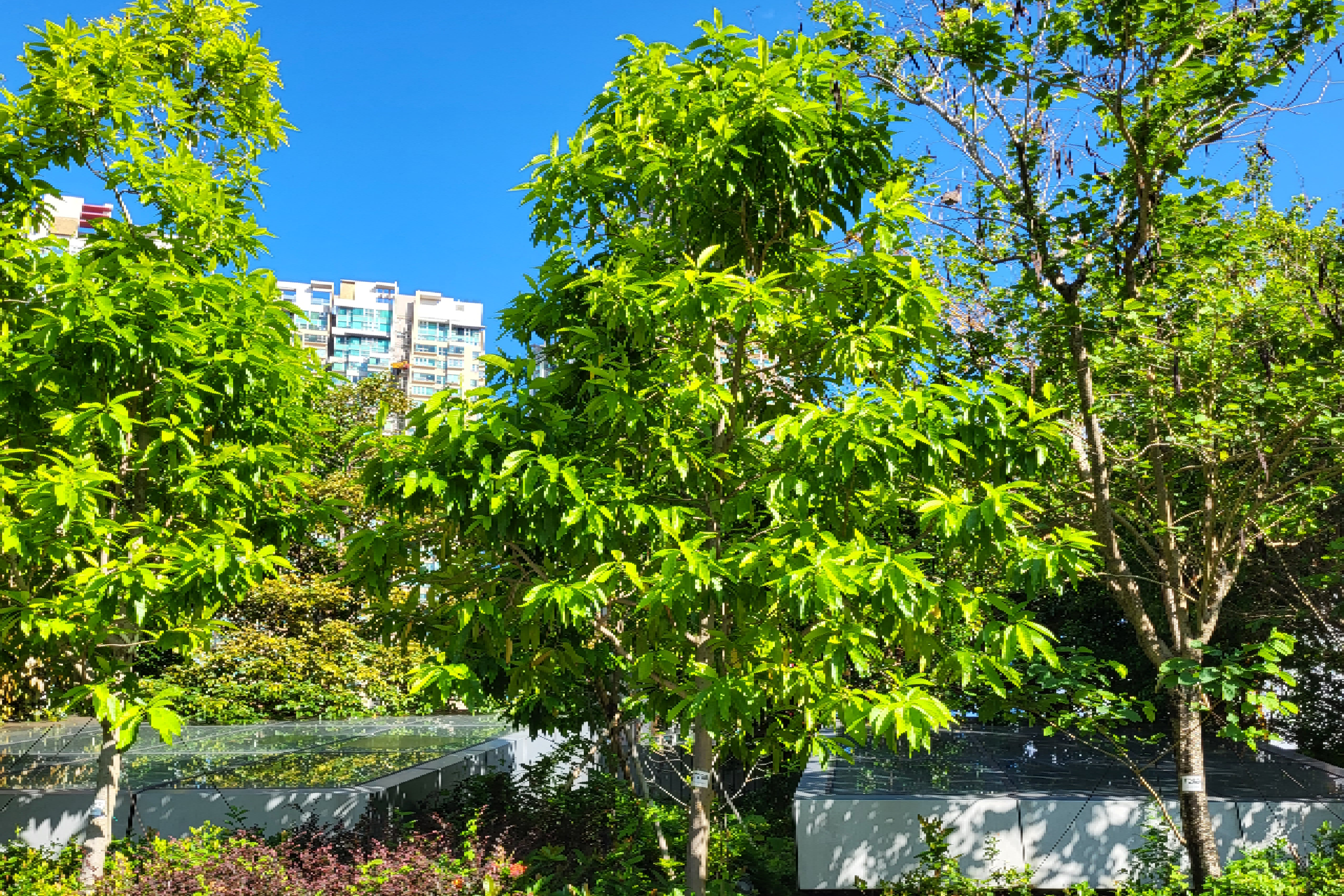
White Jade Orchid Tree, White Champak
Scientific Name: Michelia x alba DC.
Family: MAGNOLIACEAE
Genus: Michelia
White Jade Orchid Tree is a large evergreen tree native to places like Java, Indonesia. It is now widely grown in Southeast Asia. The tree can grow as tall as 17 m. The bark of the stem is grey and smooth. Leaves are oblong to lanceolate‑elliptic, thin leathery and release fragrance when rubbed. When it blooms between April and September, it fills the air with a unique, sweet strong fragrance from the creamy‑white, lanceolate flowers. The tree seldom bears fruits. Fruits are sparsely aggregated follicles, bright red when mature. White Jade Orchid Tree is actually a hybrid of two plant species, as indicated by an "x" in its scientific name.
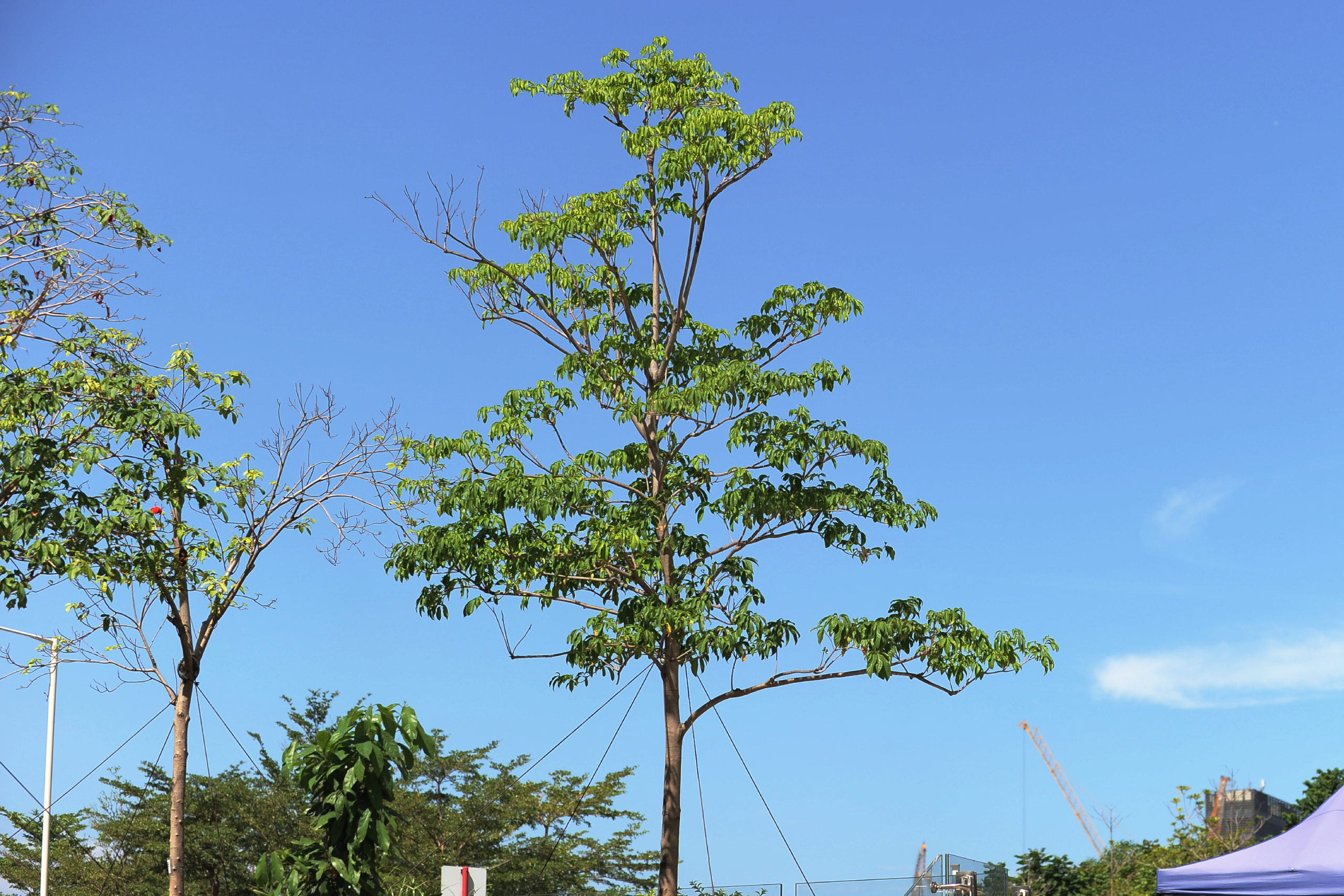
Lance-leaved Sterculia, Scarlet Sterculia
Scientific Name: Sterculia lanceolata Cav.
Family: STERCULIACEAE
Genus: Sterculia
Lance‑leaved Sterculia is a native evergreen tree in Hong Kong with a densely foliaged and rounded crown. It can grow as tall as 20 m and its trunk is simple and straight. Leaves simple, alternate and elliptical; netted veins conspicuous; petiole swollen at both ends. It blooms from April to May. Flowers are tiny, light red in colour and have five sepals extending outward stellately. It bears long ovate or long elliptical fruits from August to September. Fruits grow in formations of five pea‑pods, initially green in colour, which gradually brighten from yellow to crimson. They split at maturity with two to four black seeds in each pod.
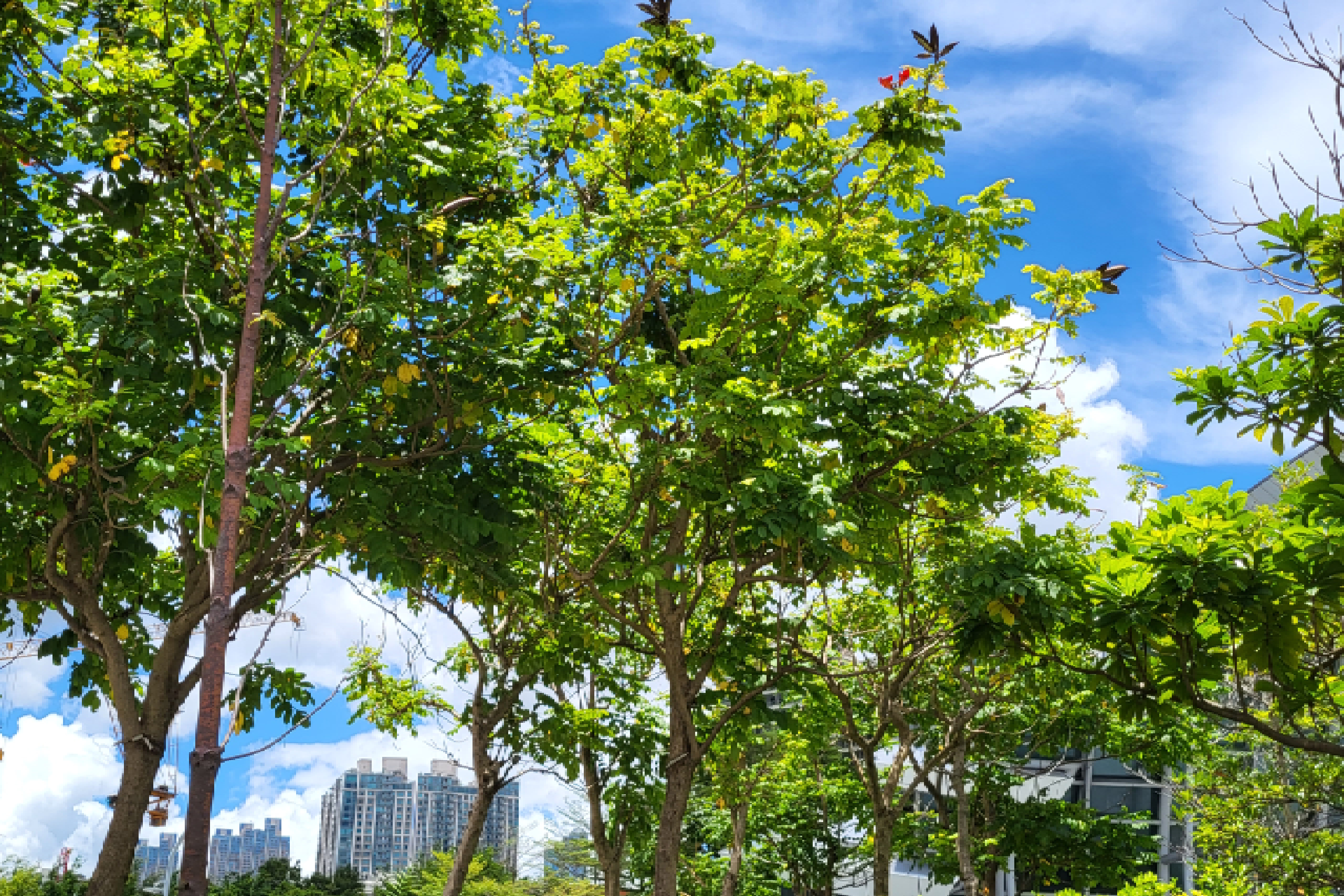
African Tulip Tree, Fountain Tree
Scientific Name: Spathodea campanulata P. Beauv.
Family: BIGNONIACEAE
Genus: Spathodea
African Tulip Tree is an evergreen tree native to Africa, which can reach 12 m tall. The tree has a stout trunk and its bark is smooth, greyish brown. Branchlets have small greyish white lenticels. Leaves are long, papery, odd‑pinnately compound, opposite. Leaflets are broadly oval or egg‑shaped in outline. Large, bell‑shaped, orange red to bright red flowers bloom from January to May, displayed in terminal, raceme inflorescence. When in full blossom, the whole tree seems to be on fire. The fruiting period extends from March to November. Fruits are slender capsules that turn blackish brown when mature and split open to release numerous seeds surrounded by membranous wings.
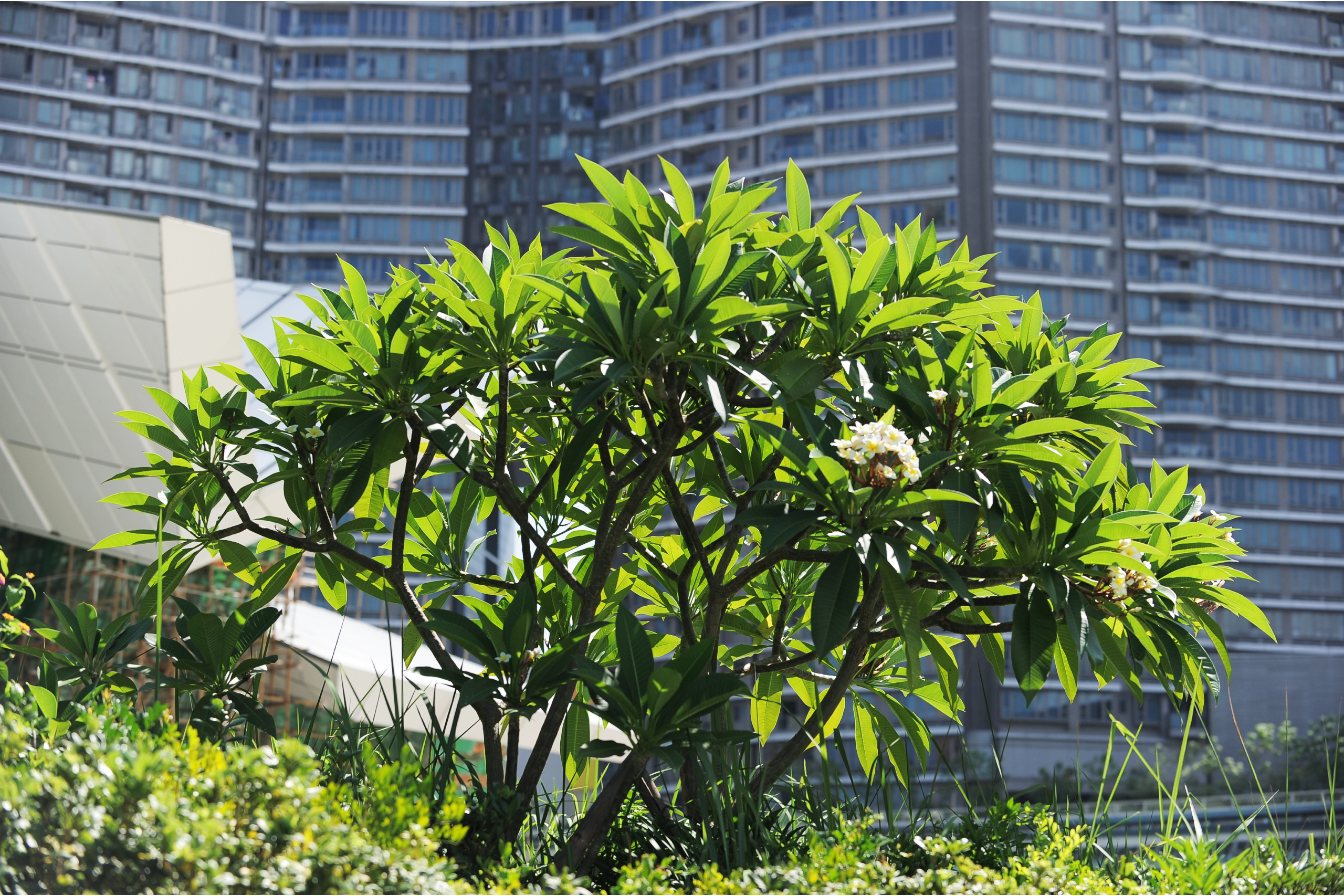
Frangipani
Scientific Name: Plumeria rubra L.
Family: APOCYNACEAE
Genus: Plumeria
Frangipani is a deciduous tree, originally native to Mexico to Central America, and can grow up to 8 m tall. The trunk is fleshy with smooth bark. Its branches are stout and will exude white milky sap when broken. Leaves are green, thick papery, oblong‑oblanceolate, arranged alternately in the upper terminal part of the branches. It produces fragrant flowers with 5 petals in pure white with a yellow centre from March to September. The flowers may associate with egg white and yolk and so Frangipani is also named "Egg Flower". It rarely bears fruits but, if it does, oblong follicles in pairs can be seen from May to October, which contain flatly oblong seeds with membranous wings which favour their dispersion through the wind.
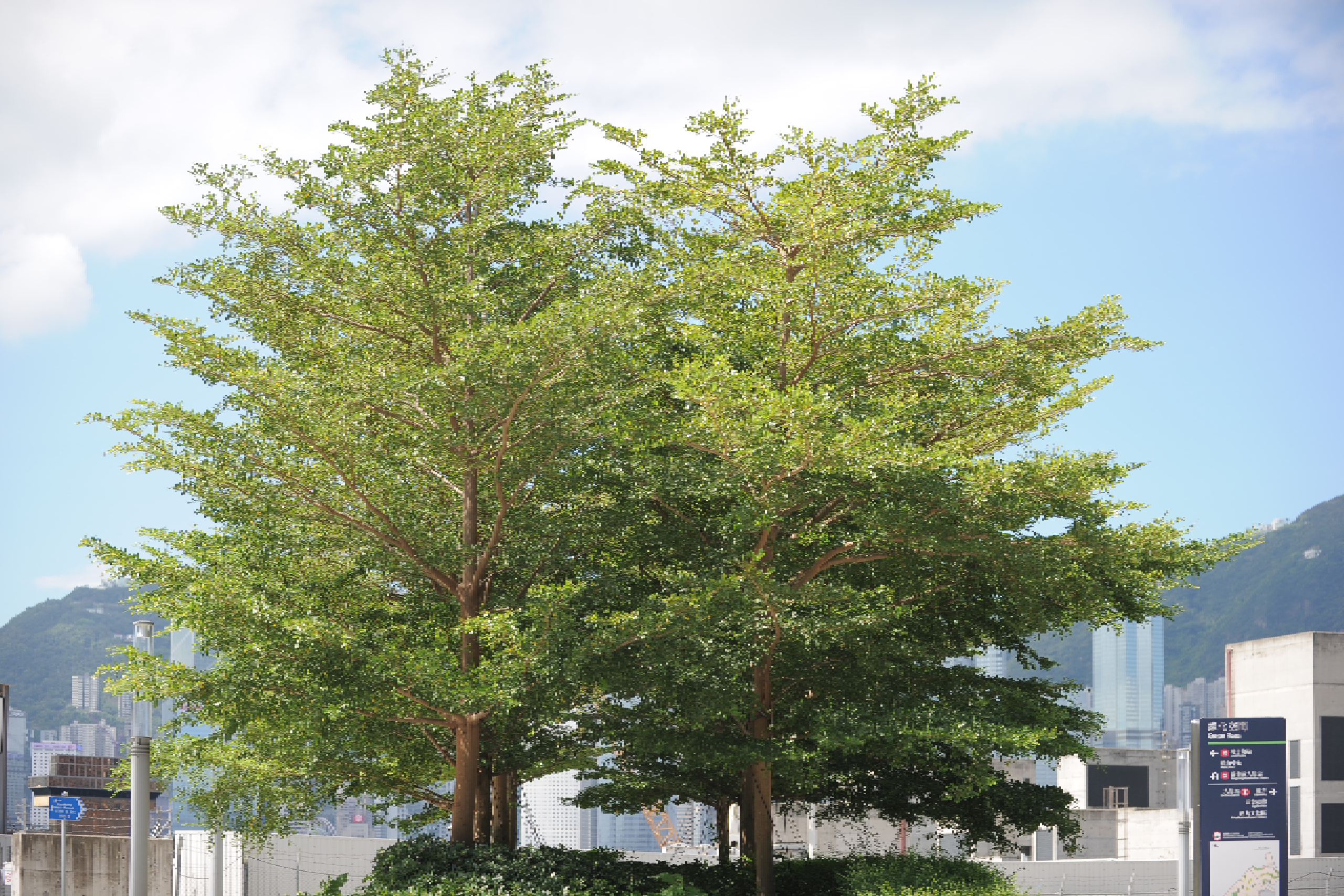
Madagascar Almond, Terminalia, Umbrella Tree
Scientific Name: Terminalia mantaly H. Perrier
Family: COMBRETACEAE
Genus: Terminalia
Madagascar Almond is a semi‑deciduous tree, which is a native of Madagascar and grows up to 10 m in height, is often planted as an ornamental or a street shade tree for its symmetrical and beautiful silhouette. It grows with an erect stem and its branches spread horizontally into distinctive layers. Simple leaves are obovate, papery and stipule‑less, fasciculate on the apex of short branches. Flowers are tiny, greenish and inconspicuous, arranged in axillary spikes. Its flowering period extends from March to June and can bear fruits from April to September. Fruits are drupaceous, oblong‑ellipsoid, turning from green to black at maturity.
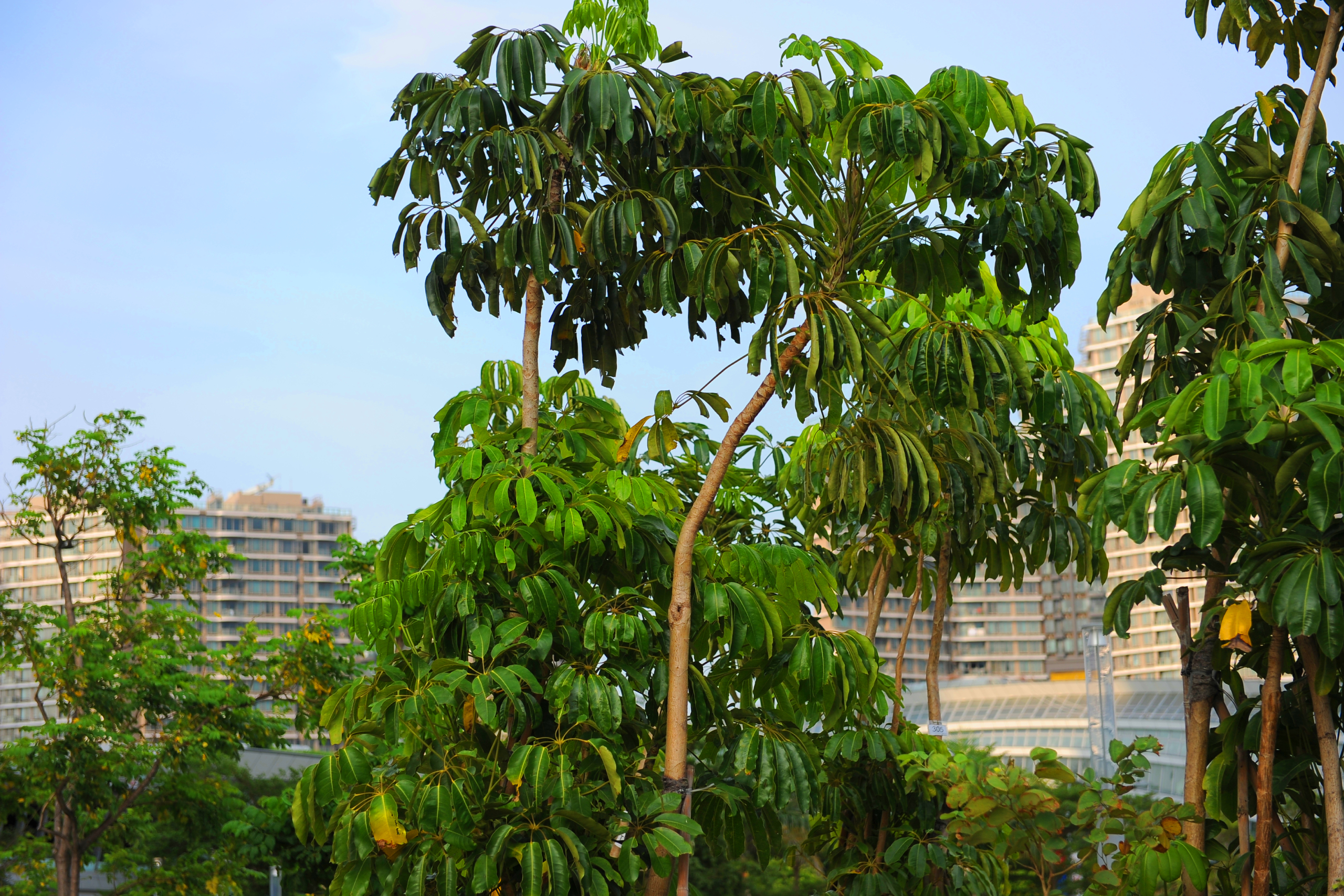
Umbrella Tree
Scientific Name: Schefflera actinophylla (Endl.) Harms
Family: ARALIACEAE
Genus: Schefflera
Umbrella Tree is an evergreen tree native to North to Northeast Queensland, Australia and South to Southeast New Guinea, widely introduced and planted in tropical areas, up to 20 m tall, trunk upright with long branches usually departing from the bottom. Bark of trunk grey, smooth. Leaves are palmately compound with a dozen of leaflets each 10‑25 cm long, oblong or narrowly elliptic in shape, shiny and leathery. Leaves radiate from the stem tips, forming an umbrella‑ or parachute‑like canopy. In October, it produces light green flowers with large terminal inflorescences which later turn into crimson and finally dark brown. Fruits appear from March to May, globose drupe, red when mature.
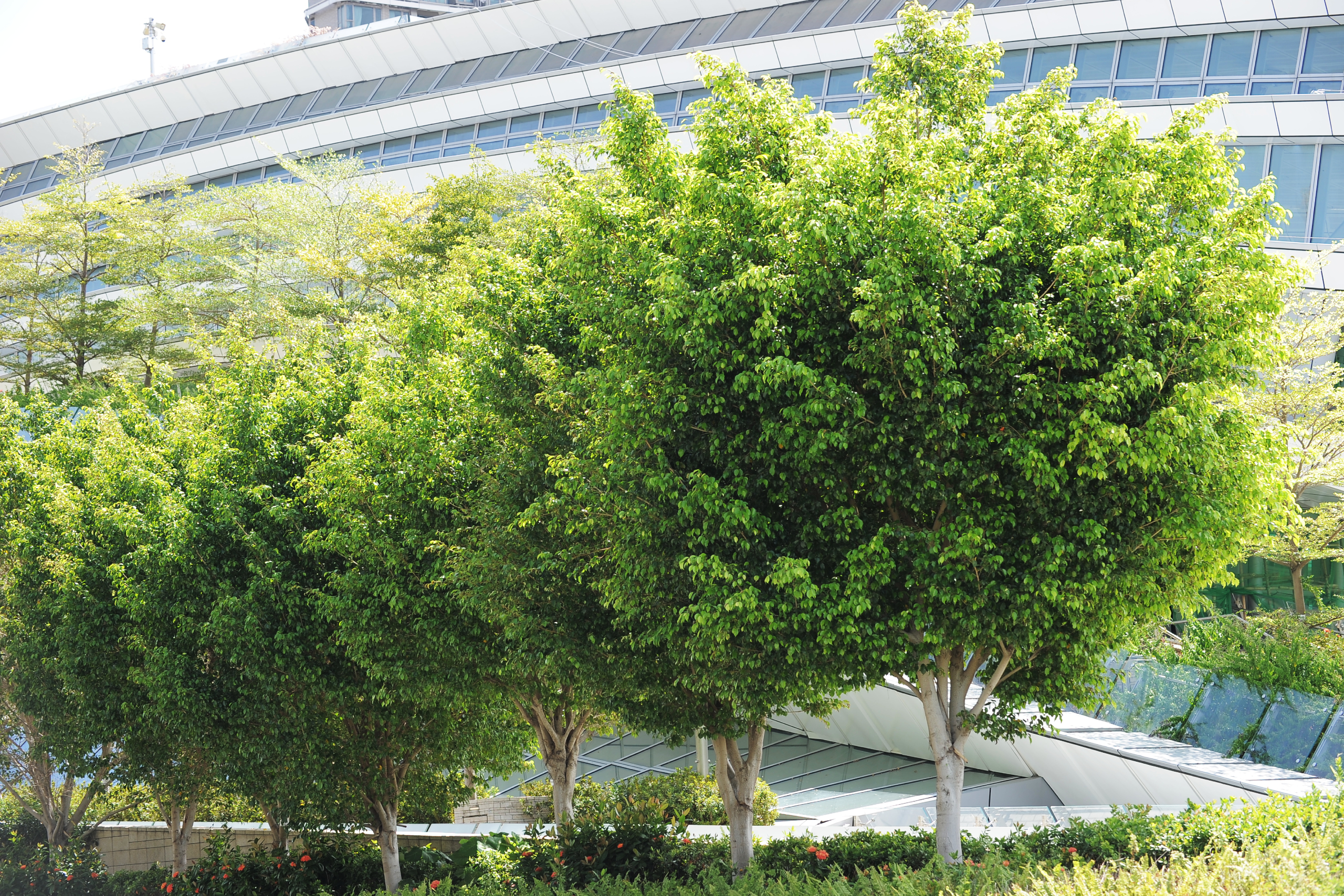
Weeping Fig
Scientific Name: Ficus benjamina L.
Family: MORACEAE
Genus: Ficus
Weeping Fig is an evergreen tree, native to South to Southwest China, and South Asia to Australia. It can reach 20 m tall. The tree grows with a dense crown and small, hanging branches as well as aerial roots. It has smooth, grey bark. Leaves are in a wavy elliptical shape and have a bright green, thin leathery surface. Fruits are born singly or in pairs on the leaf axils, between globular and oblong in shape, and yellow to red in colour when ripe. Flowers bloom inside of the fruits and can only been seen when cut. Its flowering and fruiting periods are from September to November. Weeping Fig sometimes is mistaken as Chinese Banyan, another commonly seen tree in Hong Kong, due to their similar sizes. The most distinctive difference lies in leaf apex. The leaves of Weeping Fig have an aristate apex while that of Chinese Banyan is obtuse.
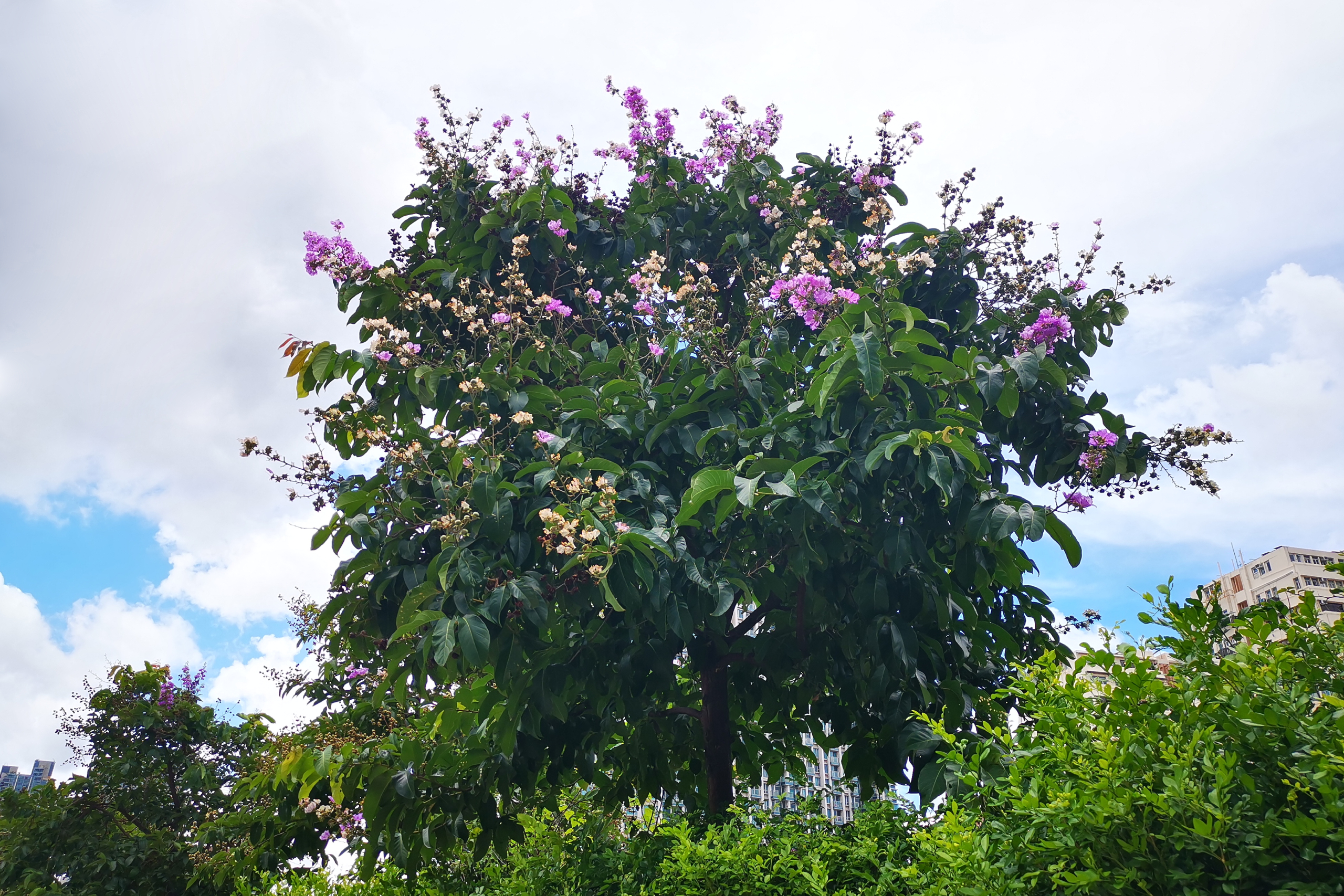
Queen Crape Myrtle, Queen Lagerstroemia, Queen Crape-myrtle
Scientific Name: Lagerstroemia speciosa (L.) Pers.
Family: LYTHRACEAE
Genus: Lagerstroemia
Queen Crape Myrtle is a deciduous tree originating from Southeast Asia and generally grows up to 10 m tall in Hong Kong. The tree has a stiff and shiny trunk with light brown bark. Leaves large, oblong‑elliptic and can be 30 cm long and 12 cm wide. The tree defoliates in winter months. Leaves often turn orange‑red or dark red before falling. Showy flowers are bright pink or purple with 6 petals blooming in large branched groups from May to July. Individual flowers are ruffled and crinkly as to appear made of crepe paper. It bears fruits from October to November which are globose woody dehiscent capsules, dehiscing into 6 valves when mature releasing the winged seeds.
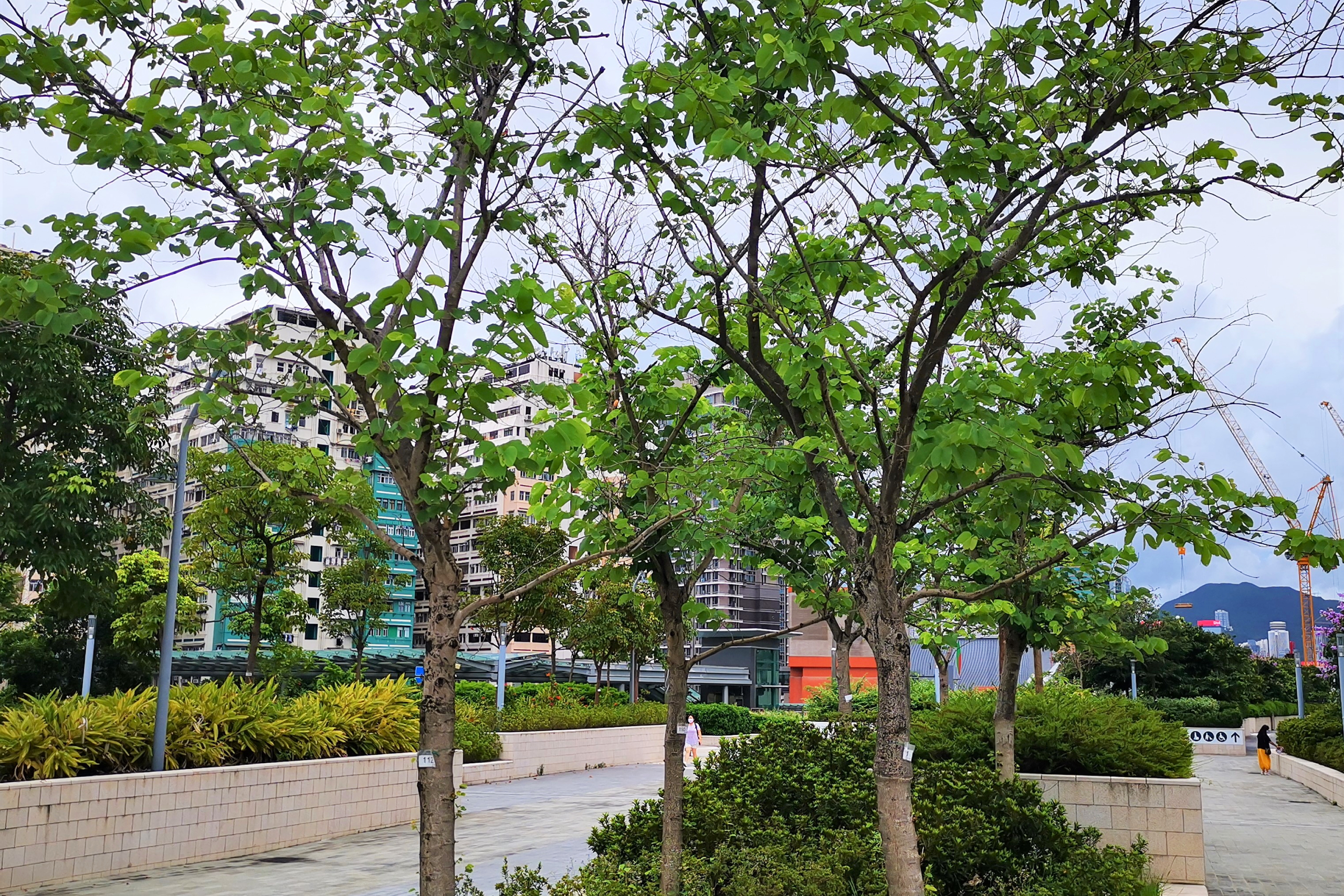
Hong Kong Orchid Tree
Scientific Name: Bauhinia x blakeana Dunn
Family: CAESALPINIACEAE
Genus: Bauhinia
Hong Kong Orchid Tree is a native evergreen tree and can grow to 10 m tall. Its bark of trunk is greyish black. As it is a sterile plant, its reproduction must be achieved by artificial propagation such as cutting, grafting or air‑layering. Through grafting, the branches of Hong Kong Orchid Tree and the rootstocks of other Bauhinia species are joined. Scar from grafting exists on the lower part of trunk. Leaves subleathery in texture, suborbicular to broadly cordate in outline, and bi‑lobed at base and apex. Its flowers are extremely beautiful, fragrant, pinkish purple, five‑petalled. It usually blooms from November to March but cannot produce viable fruits. Hong Kong Orchid Tree and Camel Foot's Tree are both purple with five stamen, with the former's flowers taking on a purplish red, deeper colour.
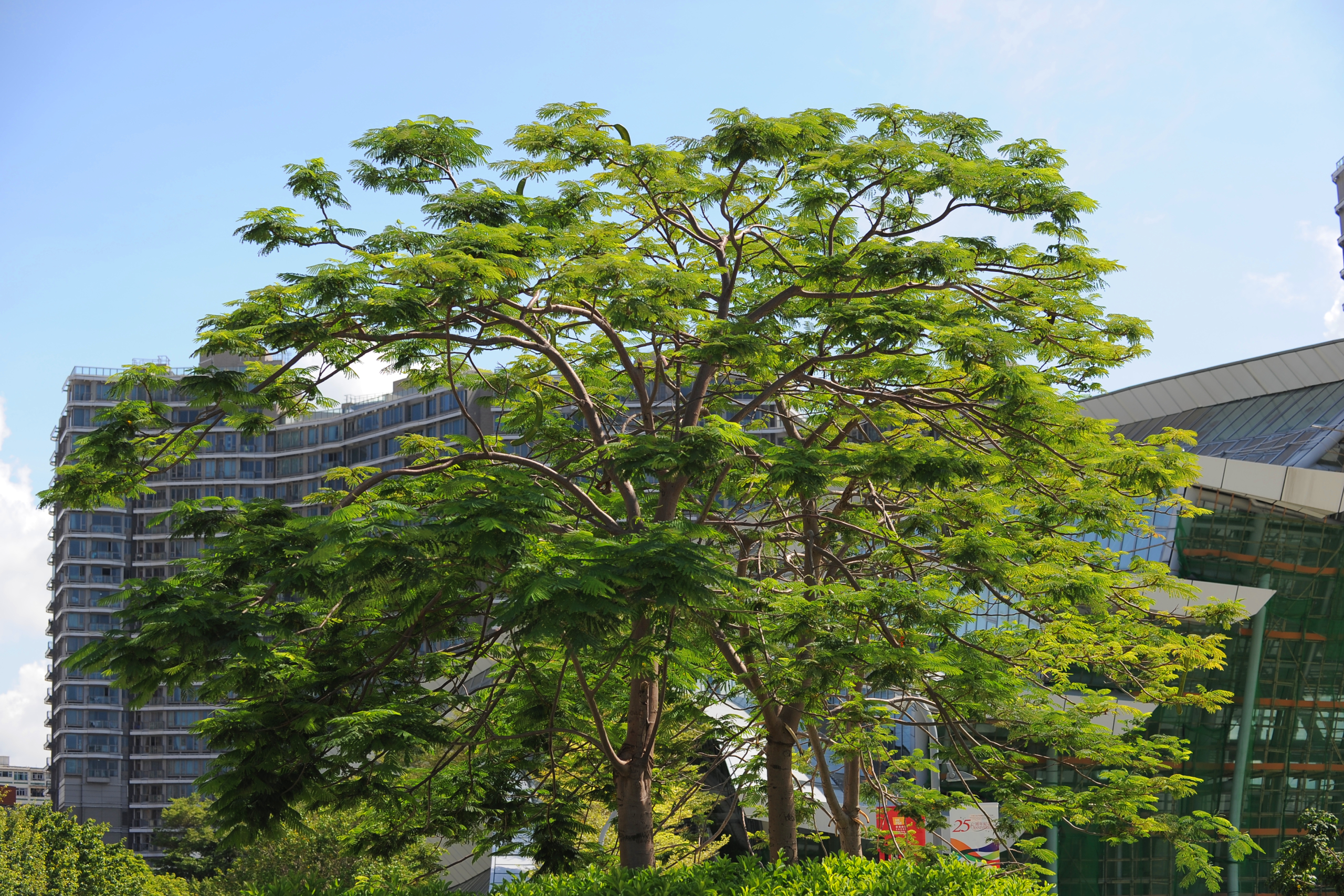
Flame Tree, Flame of the Forest
Scientific Name: Delonix regia (Bojer ex Hook.) Raf.
Family: CAESALPINIACEAE
Genus: Delonix
Flame Tree is a large deciduous tree, native to Madagascar and a common ornamental tree in Hong Kong. The tree can reach a height of 20 m. It has a stout trunk and an umbrella‑shaped crown spreading with long and nearly horizontal branches. Leaves even‑bipinnate, pinnae 15‑20 pairs. Leaflets elliptic or oblong, thin papery. Flowers in corymbose racemes near branch tips or leaf axils, bright red and orange. Each flower has 5 petals and the upper one normally longer than the rest with yellowish white streaks. It blossoms from June to July and bears fruits from August to October. The fruits are very long, flat, oblong, woody pods containing poisonous seeds.
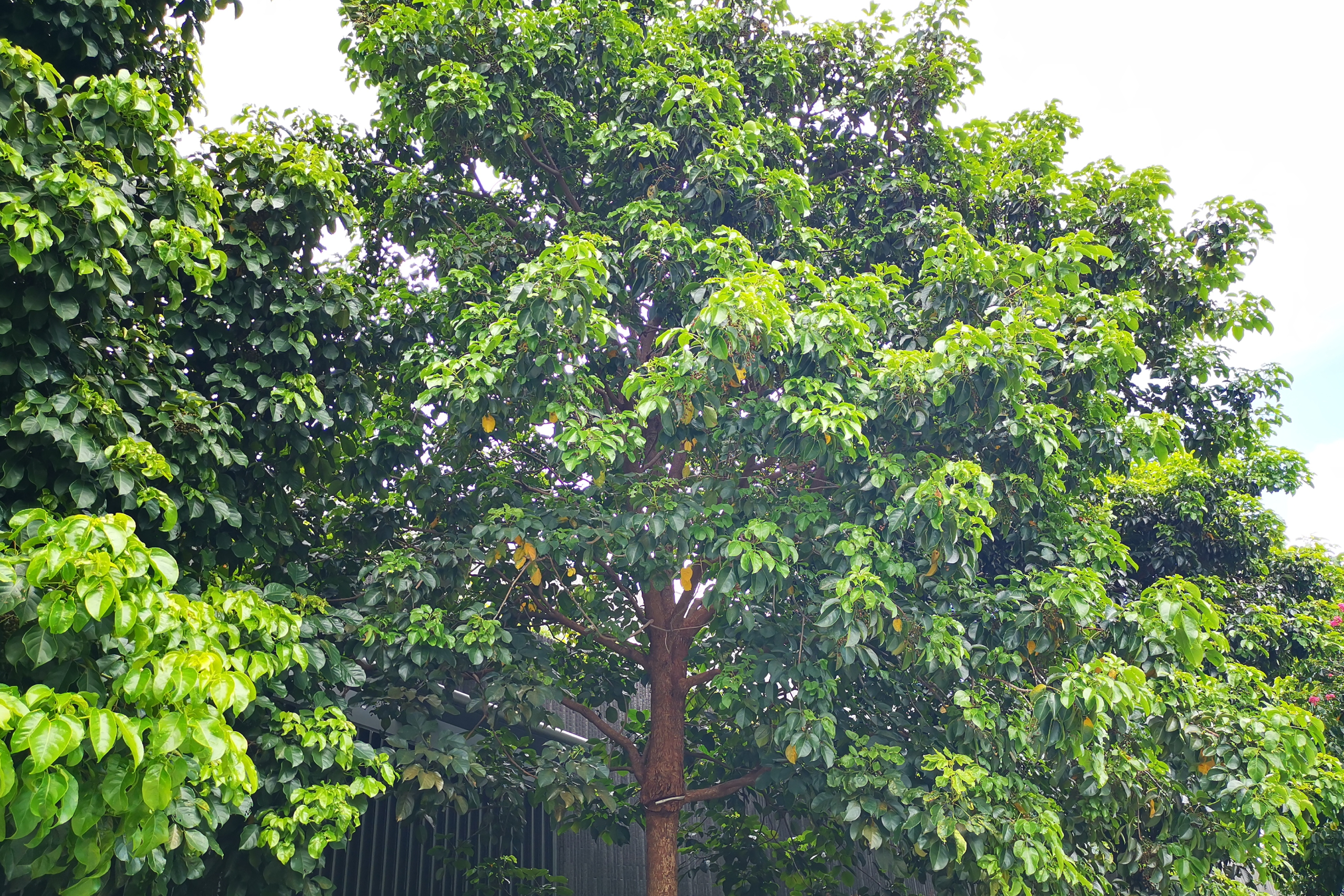
Autumn Maple
Scientific Name: Bischofia javanica Blume
Family: EUPHORBIACEAE
Genus: Bischofia
Autumn Maple is a native evergreen tree in Hong Kong commonly planted along streets or in parks to provide shade or as ornamental trees. It can grow up to 40 m. The bark of trunk is greyish brown to brown, nearly smooth. When the bark is injured, red latex will come out, which will further congeal into scab. Leaves trifoliate, with oval to elliptical leaflets with toothed margin. Flowers are unisexual and tiny, blossom from April to May. Only female trees will bear fruits which are berrylike, fleshy and brown in colour and can be seen from August to October.
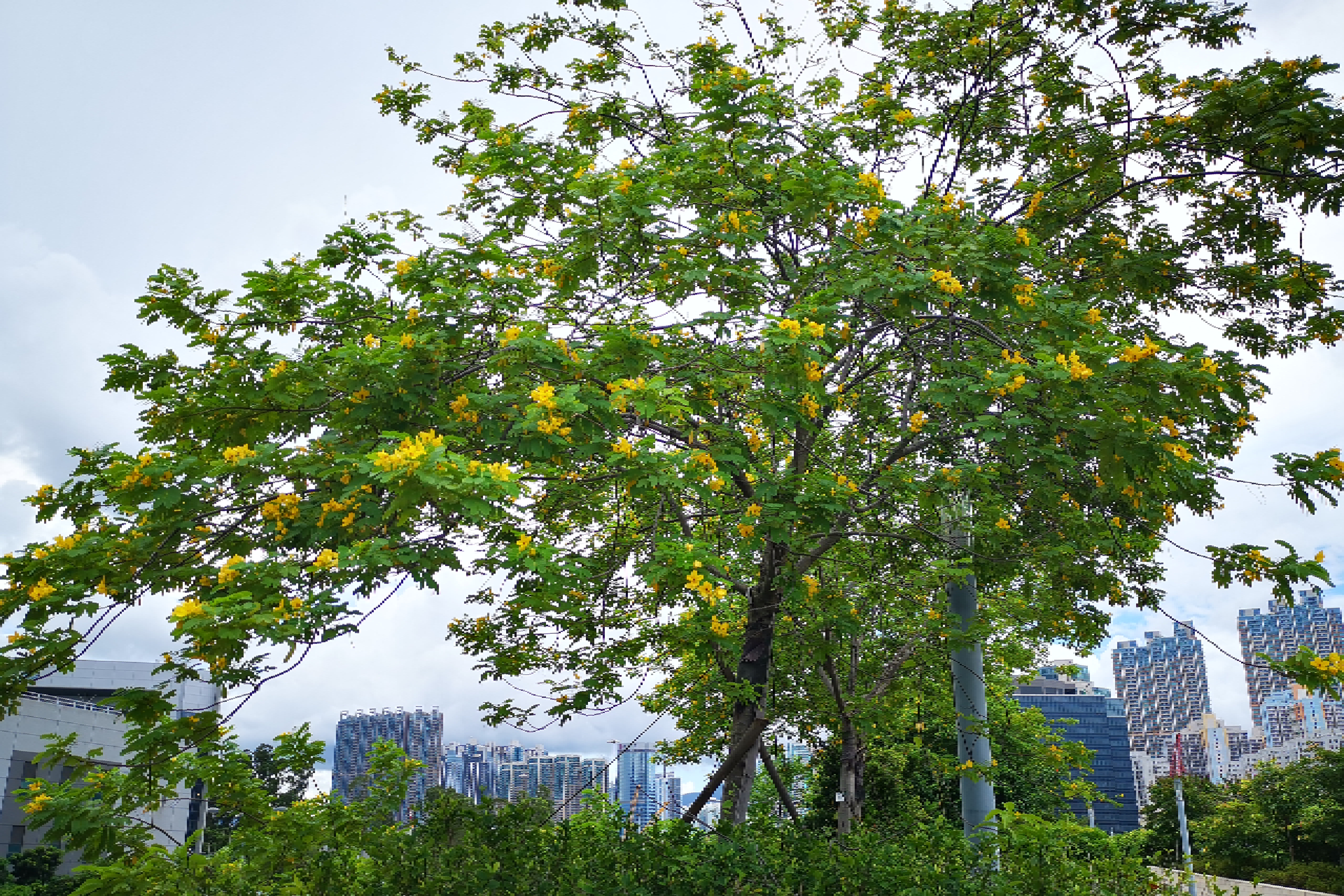
Sunshine Tree
Scientific Name: Senna surattensis (Burm. f.) H. S. Irwin & Barneby
Family: CAESALPINIACEAE
Genus: Senna
Sunshine Tree is an evergreen tree native to Tropical Asia, Australia and the Pacific, which can grow up to 7 m tall. It carries many branches and develops a rounded dense crown. Leaves even pinnate with 7‑9 pairs of oblong‑elliptical leaflets. Rachis and petiole flattened, tetragonal. Flower racemes occur in axils of leaves in upper part of branches. Petals are bright yellow or drying orange, ovate, 5‑veined, clawed. Fruits are pods, flat, brownish when mature, splitting open to release 10‑12 seeds. The flowering and fruiting periods are almost all year round.
